![The Ultimate Guide to Drone Inspections [2024]](https://www.thedroneu.com/wp-content/uploads/2023/08/Drone-Inspections-guide-1024x597.jpg)
In recent years, drone inspections have become mainstream across many industries and verticals.
Research shows that the drone inspection market, currently valued at $9.94 billion in 2024, is expected to reach $18.94 billion by 2028! These statistics clearly show that the drone inspection market is thriving.
Eager to tap into his burgeoning field? This guide would be a great starting point.
In this guide, you’ll get a 360-degree understanding of Drone Inspection and how you can get started in this industry with a sense of clarity and ease.
Let’s get started.
What is Drone Inspection?
Drone inspection is the process of using unmanned aerial vehicles (a.k.a drones) equipped with cameras and sensors to inspect and evaluate structures, facilities, and infrastructure.
It provides a safe, cost-effective, and efficient alternative to traditional inspection methods. You can analyze the data collected from drone inspections to identify potential issues, track progress, and inform decision-making.
Before delving into the specifics of drone inspection, let us take a look at how drone inspection works.
How Does Drone Inspection Work?
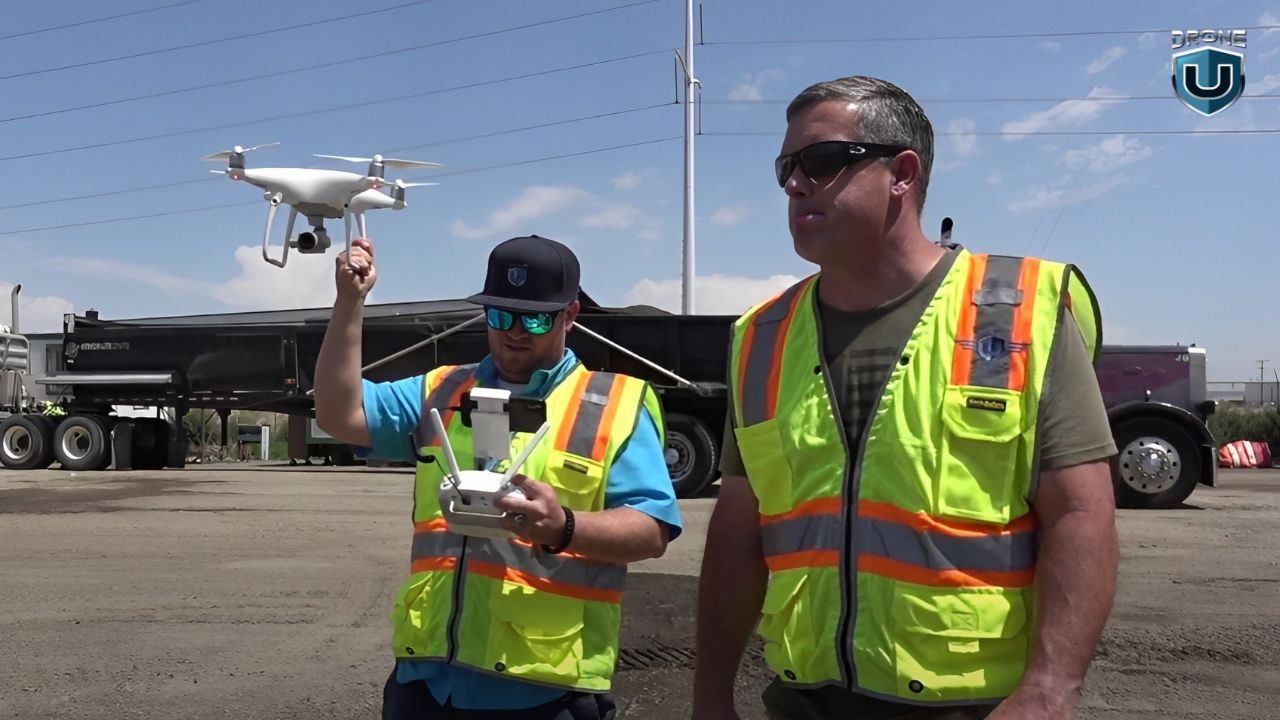
The drone inspection can be broken down into three steps:
I. Preparing Drone Inspection Mission: Before any drone inspection, it’s important to properly understand and assess the terrain, local regulations, and required safety measures. You also need to identify the right drone for the mission.
II. Capturing Data: Drones collect data using payloads (e.g. camera sensors) suitable for the mission. This captured data is then sent for processing.
III. Analyzing and Interpreting Data: The final step is to analyze and process drone data using specialized software. This is where insights are garnered and communicated to the stakeholders.
Let’s check out what each step entails:
I. Preparing the Drone Inspection Mission
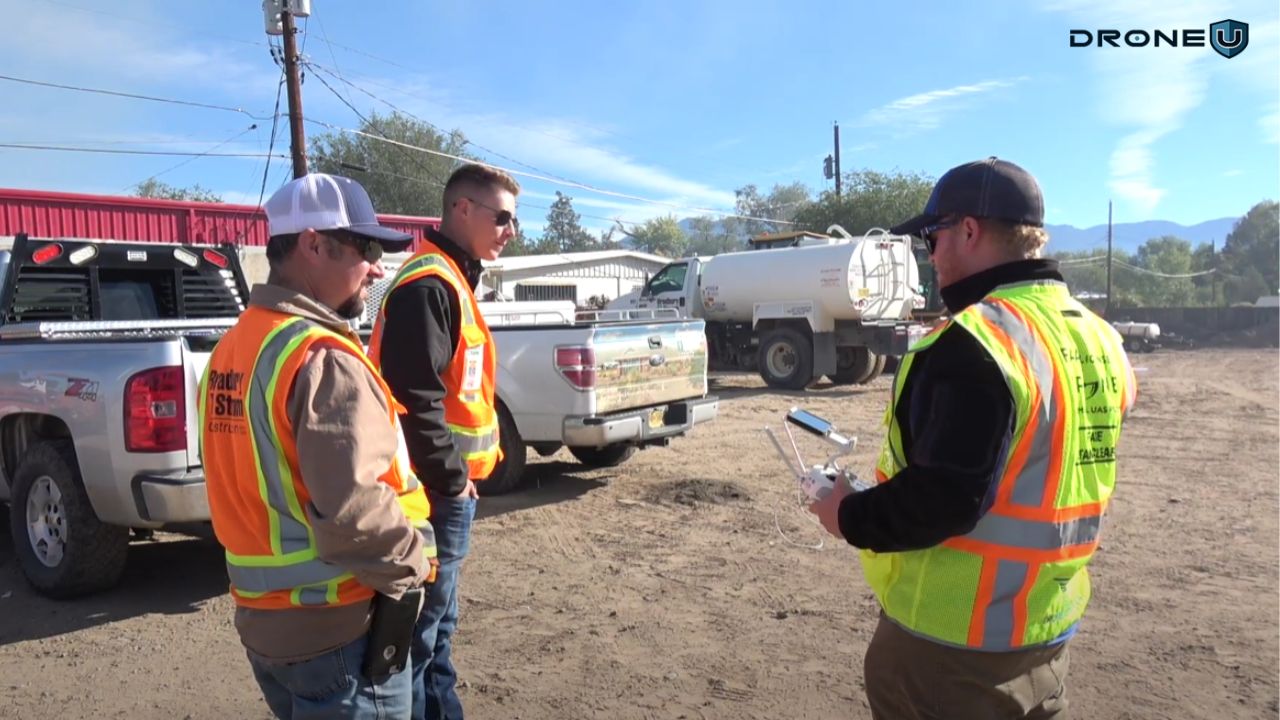
This involves FOUR simple steps:
- Obtaining necessary permits and permissions: Check with the FAA (through one of the various flight approval app options) and local authorities to ensure you have the proper permits and permissions to conduct your inspection.
- Conducting a site survey: Assess the inspection site for any potential hazards, obstacles, or challenging terrain.
- Planning the flight path: Determine the most efficient and safe flight path for the inspection.
- Conducting a pre-flight check: Ensure your drone is in good working order before taking off.
Now, picking the right drone is a crucial part of getting ready for a drone inspection mission. If you want to choose the perfect drone for your inspection work, here are some factors you should consider:
1. Range
The range of a drone is an essential factor to consider when purchasing one. If you need wider coverage and more varied shots during your inspection, a longer-range drone would be preferable.
Remember, though–the higher the flight range of a drone, the higher its price.
For example, the:
- DJI Air 2S has a range of 7.5 miles
- DJI Mavic 3 has a range of 9.3 miles
- DJI Mavic 2 Enterprise Advanced has a range of 6.2 miles
- DJI Matrice 30T has an operation range of 4.34 miles.
2. Camera
It’s also important to check the drone’s camera specifications, including shutter speed, frame rate, zoom options, aperture, and image stabilization. All of these factors can affect the quality of your photographs.
Pro Tip: You should settle for a high-resolution camera with a larger sensor and a 35mm equivalent focal length for your drone inspections. It will allow you to capture more detailed images of the object being inspected and improve image contrast, which helps generate accurate 3D models and point clouds.
3. Flight Time
A drone’s flight time is limited by its battery life. Cheaper models last only a few minutes, while more expensive ones typically have a flying time of around 25-40 minutes.
Here are the flight times of some popular drones:
- DJI Mavic Mini (up to 30 minutes)
- Autel Robotics EVO Lite+ (up to 40 minutes)
- DJI Mini 2 SE (up to 31 minutes)
- Autel Robotics EVO II (up to 40 minutes)
- DJI Matrice 30T (up to 41 minutes)
Pro Tip: Purchase additional batteries and charge them before leaving home to extend the flight time.
4. 3-Axis Gimbal
A three-axis gimbal is like a steadying hand for a drone’s camera. It helps to keep the camera steady while the drone moves around in different directions (such as up and down, tilting from side to side, and rotating.)
This is particularly important when using a drone for inspection, as the camera must remain level to capture accurate data and imagery.
Without a gimbal, the camera may shake or tilt, making it difficult–if not impossible–to capture the required data.
5. Payload Capacity
A drone’s payload capacity is the maximum weight it can carry in addition to its own weight. It’s vital to ensure that your drone has enough payload capacity to carry the necessary inspection equipment.
Having nailed the basic preparations of drone inspection, let us dive into the next section: Capturing Media.
II. Capturing High-Quality Data and Images
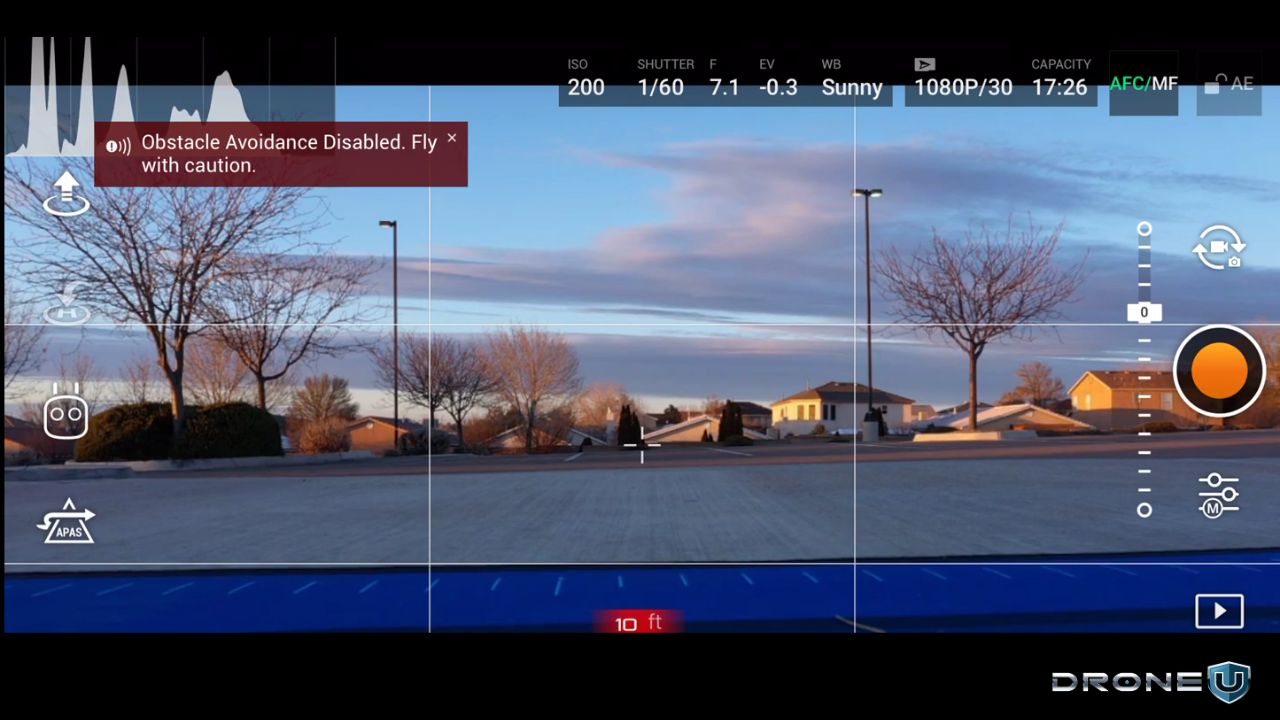
Since the data you collect from your inspection will form the basis of your analysis and reports, you need to ensure that you get the best possible visuals.
In this section, we’ll talk about how you can capture images that are clear, detailed, and useful.
A. Tips for Capturing Clear and Detailed Images
These tips will help you get high-quality visuals during your inspection.
1. Fly at the right altitude
First, it’s important to fly your drone at the right altitude. The optimal altitude for an inspection can vary depending on the size and nature of the area being inspected.
A good rule of thumb is to fly your drone low enough to capture the necessary detail, but high enough to avoid any obstacles.
For instance, while doing a roof inspection, you may need to fly closer to capture the details, but when inspecting a large property, you may need to fly higher to cover more ground.
Overall, try to experiment with different altitudes to find the sweet spot for your inspection.
2. Fly in good weather
Weather conditions can have a big impact on the quality of your images. To capture good images, it’s best to be aware of the weather conditions beforehand.
Avoid flying in adverse weather conditions such as rain, fog, or high winds, as they can affect the quality of your images and even put your drone at risk. So, for best results, choose a day with clear skies and good lighting.
You can also take advantage of real-time weather monitoring apps designed for drone pilots (such as UAV Forecast) to get detailed weather insights before and during your flight.
3. Use a gimbal
A gimbal is a helpful tool that keeps the camera steady and minimizes unwanted camera movement during flight.
This can make a big difference in the quality of your images, especially when flying in windy conditions.
Invest in a good-quality gimbal (ideally one that offers 3-axis stabilization) to ensure your camera stays steady and gets smooth shots.
4. Camera angle
Adjusting the camera angle is another important step in capturing images. Test out different camera angles to find the best perspective for your inspection.
In the case of a roof inspection, for example, you may need to tilt the camera to capture the correct angle, whereas a cell tower inspection may require you to rotate the camera to capture a 360-degree view.
Don’t be afraid to play around with different camera angles to get the best shot.
5. Grid lines
The grid lines on your camera screen can help you align your shots and capture images that are level and straight. This is especially useful when inspecting structures or objects that require precise leveling.
Use the grid lines to make sure your images are straight and level, and make any necessary adjustments before taking the shot.
B. How to Use Different Camera Settings to Optimize Your Images
Here are some must-know camera settings tips to help you optimize your images:
1. Adjust exposure settings for optimal image quality
Simply put, exposure determines how light or dark your images will appear.
You can use the histogram to analyze the exposure levels of your images and adjust accordingly to get a balanced image with details in the highlights and shadows.
2. Choose the right white balance for accurate colors
White balance balances the color temperature of your images to ensure that each color appears natural and true to life.
So, for a more accurate color representation, you can use the custom white balance function on your drone’s camera to match the environment’s lighting conditions.
3. Select the ideal shutter speed for clear images
Need a more cinematic look for your videos? You should preferably opt for a slower shutter speed.
However, if you’re looking to avoid blur caused by drone movement or wind in still images, you should use a faster shutter speed.
4. Use proper focus settings for sharp shots
Using the autofocus function is one of the best ways to keep your drone images sharp.
Better still, if you want to ensure that the focus is on the subject of interest, manual focus might be your best bet.
You can also try using focus stacking techniques for more detailed and clearer images.
Now, let’s discuss the third and most critical piece of the drone inspection process–Analyzing and Interpreting drone data.
III. Analyzing and Interpreting Drone Data
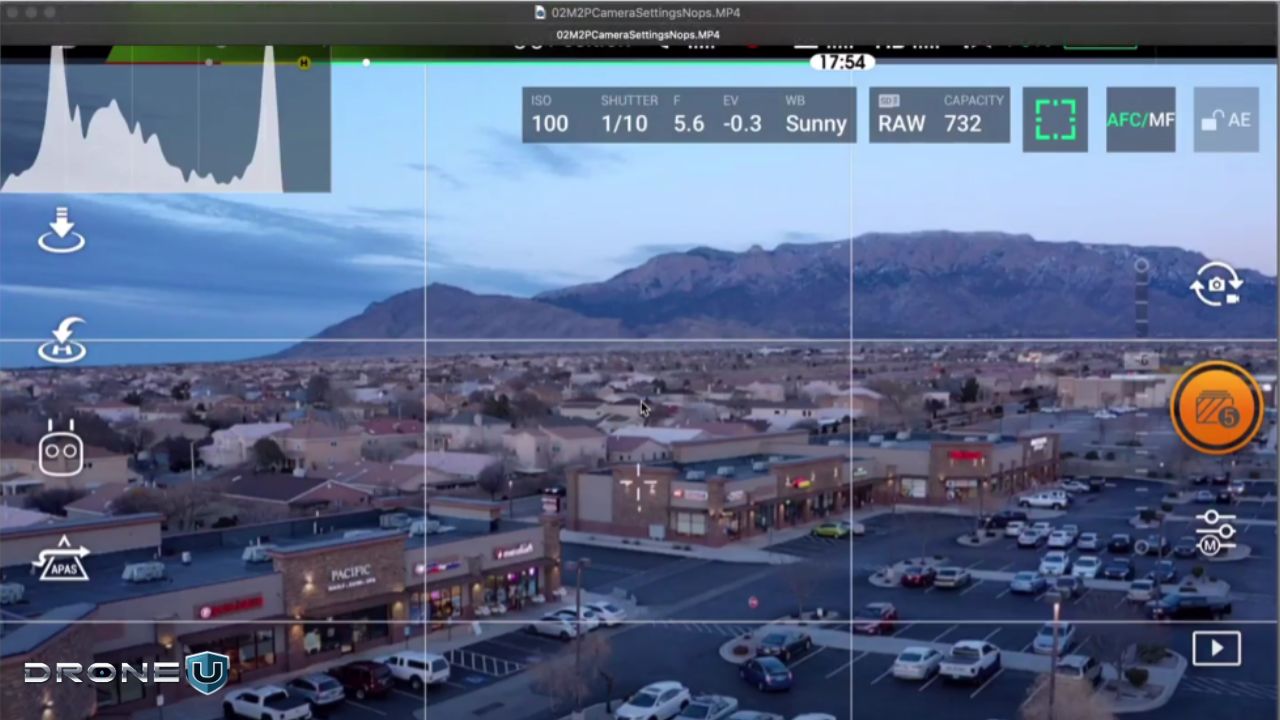
Capturing the media is half the battle won, as getting the right deliverables across to the client is what will make a real difference.
In this section, you’ll discover how to effectively do so without any hassles. We’ll cover:
A. Software that you can use for data processing and analysis
B. Analyzing drone inspection data
C. Creating reports from your drone inspection data
Let’s get started.
A. Software You Can Use for Data Processing and Analysis
Here are a few commonly used tools you can use to process and analyze drone inspection data:
- Pix4D: A comprehensive software suite that offers tools for photogrammetry, mapping, and data analysis.
- DroneDeploy: A cloud-based software platform that allows you to process, analyze, and share drone data.
- Agisoft Metashape: A photogrammetry software that generates 3D models and maps from drone images.
- ArcGIS Pro: A GIS application that allows you to manage, analyze, and share your drone data.
- Optelos: An AI-powered visual inspection data management platform that puts together different types of data, like 360 images and 3D models, onto a single point cloud or 2D map.
- LP360: A data processing software that maximizes LiDAR and imagery data with its visualization, QA/QC, classification, 3D editing, and analysis capabilities.
Unsure about choosing a drone mapping software? Check out our comprehensive guide on drone mapping here!
B. Analyzing Drone Inspection Data
This is where the rubber meets the road. Analyzing drone inspection data is a crucial step in the inspection process as it helps to identify and highlight areas of concern that may require further investigation or action.
Here are a few important techniques you can use to do so:
- Image comparison: Image comparison is a technique where drone images from different flights are compared to identify changes or anomalies, such as cracks or structural damage.
- Point cloud analysis: This involves creating a 3D model of the inspection site to identify areas of concern, such as changes in terrain or surface irregularities.
- Data clustering: Data clustering is a technique where similar data points are grouped to identify patterns and anomalies, such as hotspots or areas of potential risk. Machine learning algorithms can also be used to automatically identify and highlight areas of concern, such as corrosion or leakage.
These techniques can help you effectively analyze and interpret your drone inspection data to ensure accurate inspections.
C. Creating Useful Reports from Your Data
Creating useful reports and visualizations is an essential part of the drone inspection process, as it helps you communicate the findings to stakeholders effectively.
Here are some techniques to create these reports and visualizations:
1. 2D and 3D mapping
Creating maps and 3D models of the inspection site is an effective way to visualize the data. It allows stakeholders to get a better understanding of the site and identify areas of concern quickly. This technique also helps create a baseline for future inspections.
2. Heat maps
Using color coding to highlight areas of concern is an effective way to draw attention to potential issues.
Heat maps can be created by analyzing data such as temperature, humidity, or moisture levels. It’s particularly useful for identifying patterns or trends over time.
3. Reports
Creating detailed reports that summarize findings and recommendations is essential to communicating the results of the drone inspection to stakeholders. Reports should be easy to understand and include visual aids such as charts and graphs.
What’s more, the reports should highlight the areas of concern and provide actionable recommendations to address them.
With a grasp of drone inspection technology, let’s explore its diverse uses in different sectors.
Drone Inspections Across Industries
Just as we mentioned in the introduction, drones are being used for inspections across different industries today.
Some of these industries include:
1. Mining
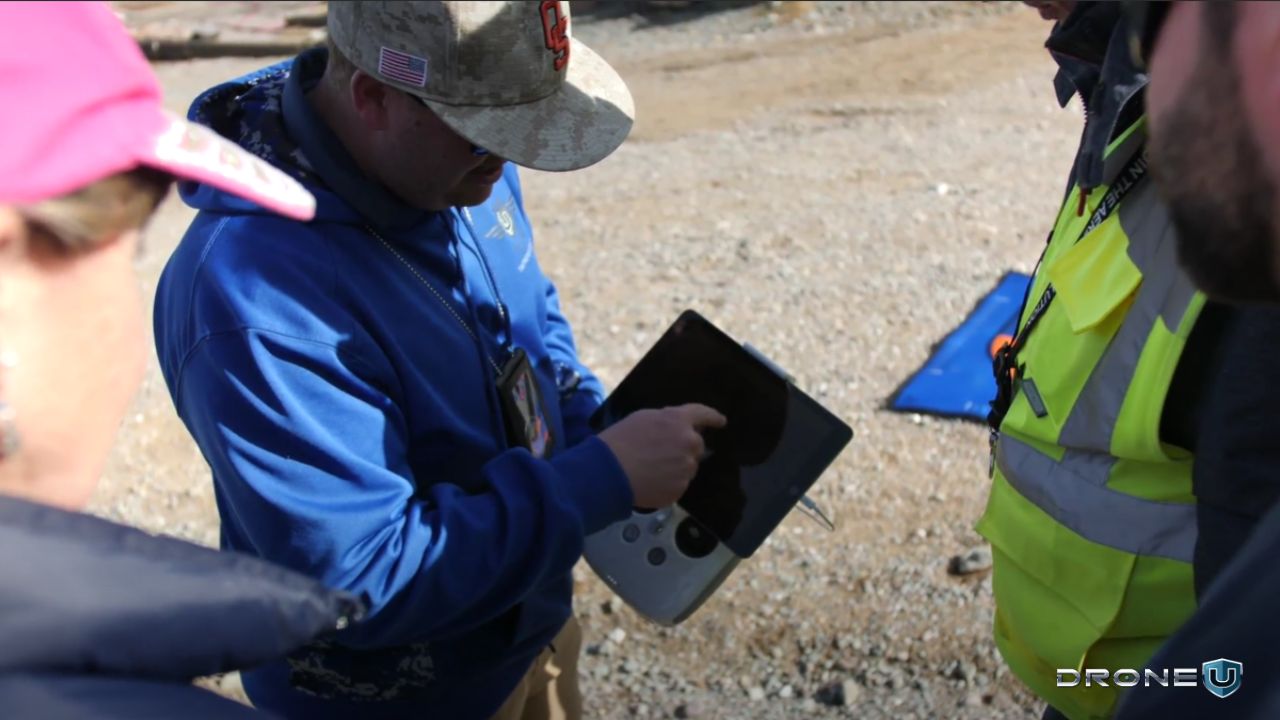
In the mining industry, drones can be very helpful in surveying vast and often inaccessible areas, including unstable stopes.
For instance, since most drones are equipped with cameras and LiDAR sensors, they can collect visual data and create 3D models of stopes. This in turn allows for effective safety assessments without putting workers at risk.
Drones can also help in monitoring stockpile volumes and mapping out exploration sites.
2. Insurance
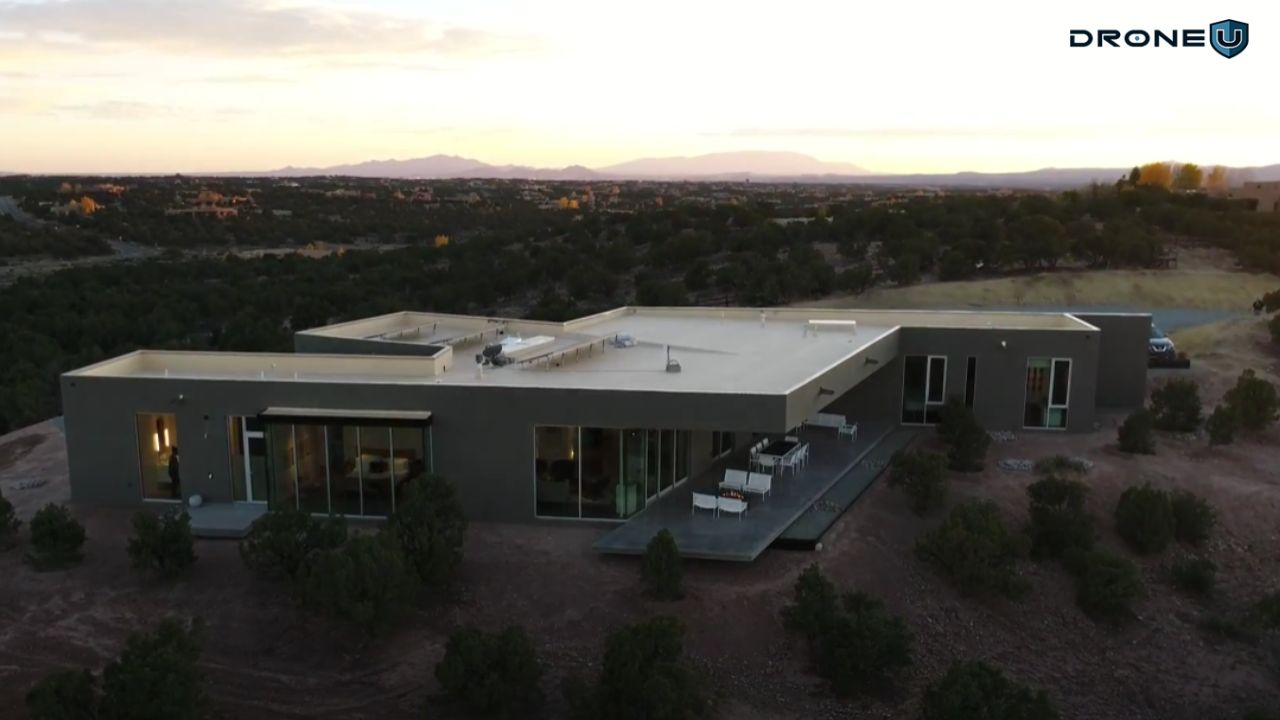
Drones are increasingly being used in the insurance sector to streamline processes like damage inspections, claims management, and property assessments.
By capturing high-resolution images and videos, drones allow insurance companies to effectively assess damage from natural disasters, fires, or other accidents.
3. Oil & Gas
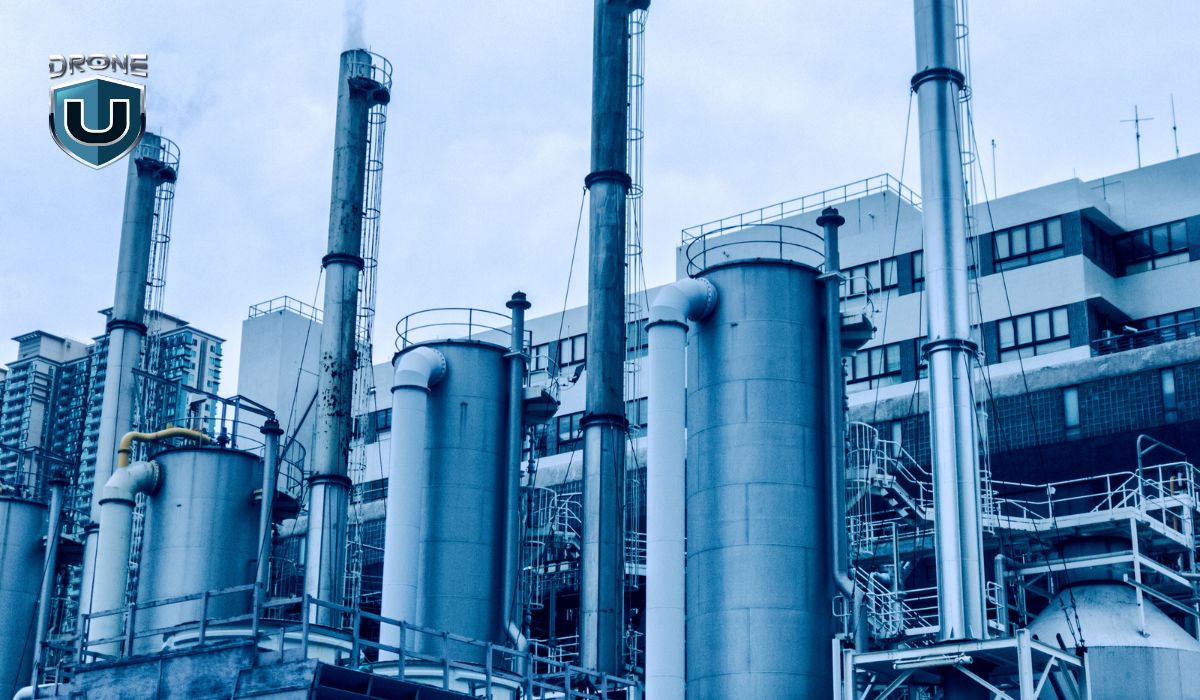
Companies in the oil and gas industry that use drones for regular pipeline and oil rig inspections can keep inspectors out of harm’s way, save costs, and easily assess remote areas that are difficult to access.
Drones can also be used to inspect the equipment used in the production of materials in this industry.
4. Agriculture
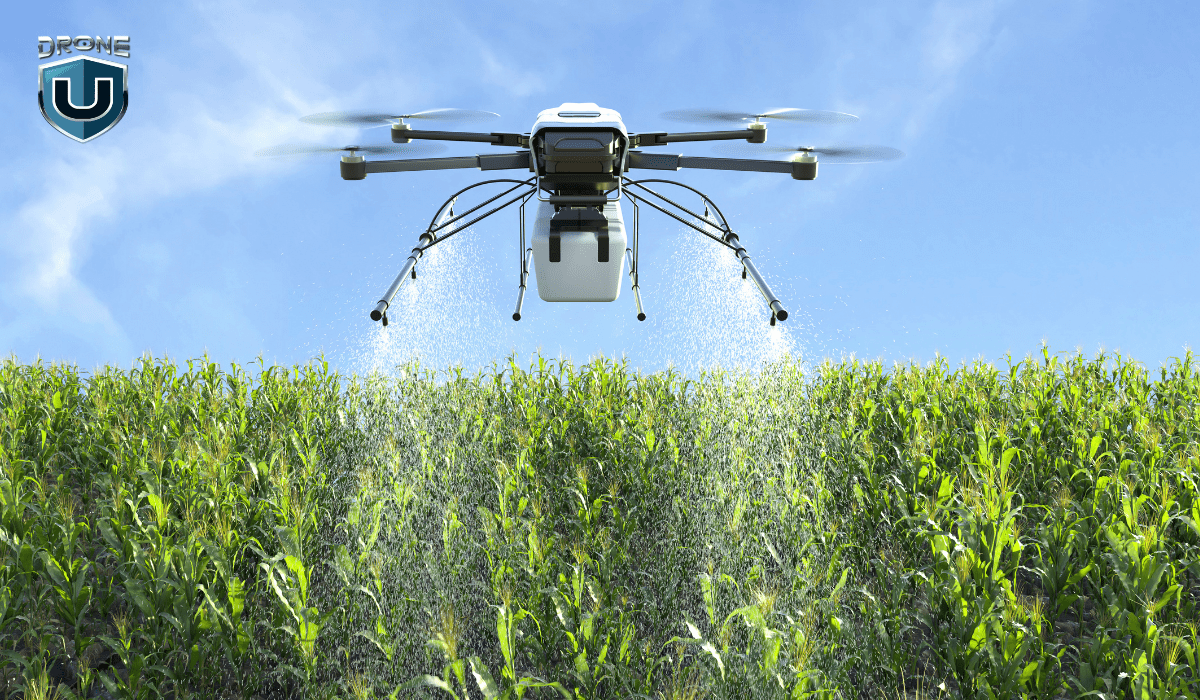
By leveraging drone inspection services, farmers can get detailed insights into crop health, soil conditions, and irrigation systems.
Aside from regular monitoring of crops (and livestock), inspection drones can also create 3D maps of farmlands to help farmers identify and address problems before they escalate.
This will empower them to make data-driven decisions that ultimately improve crop yield and optimize farming practices.
5. Chemicals
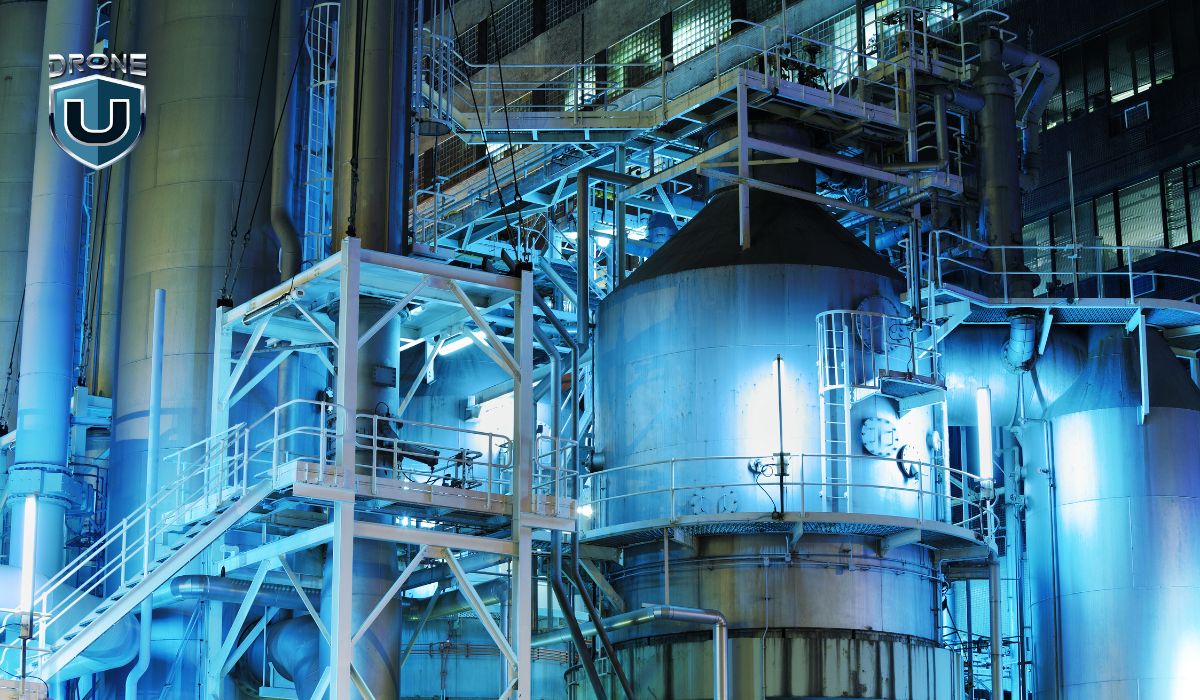
Drones can also be used to inspect facilities such as pipe racks, storage tanks, and processing plants.
The primary advantage of this is that it reduces the need for human inspectors to enter potentially dangerous environments where they can be exposed to hazardous materials.
6. Construction
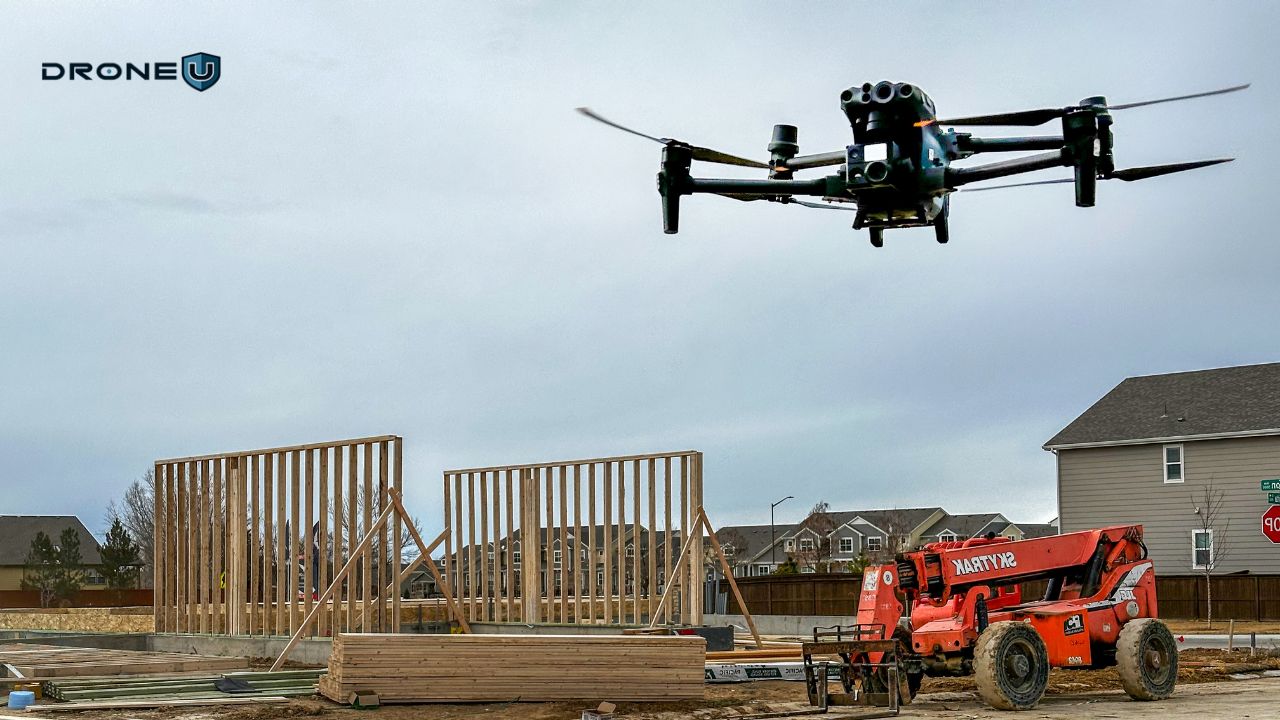
Drone construction inspections offer a safer and more efficient way to track project progress, inspect structures, and manage logistics.
They deliver valuable visual data that can aid effective site planning, identify potential safety hazards, and ensure accurate reporting to customers and stakeholders.
7. Public Safety
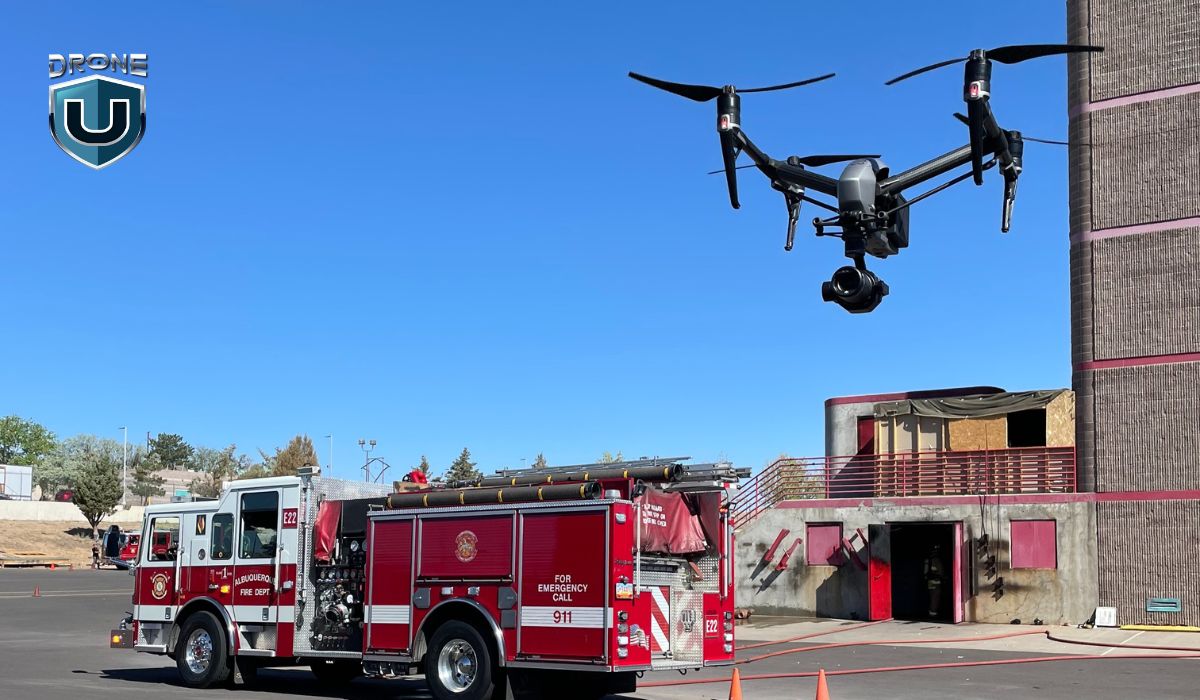
As time goes by, drones are proving to be invaluable in the public safety sector. They can be used for surveillance, damage assessment, search and rescue operations, and monitoring ongoing critical events.
The aerial intelligence captured by these drones can help public safety personnel make quick and informed decisions during emergencies.
8. Power Generation
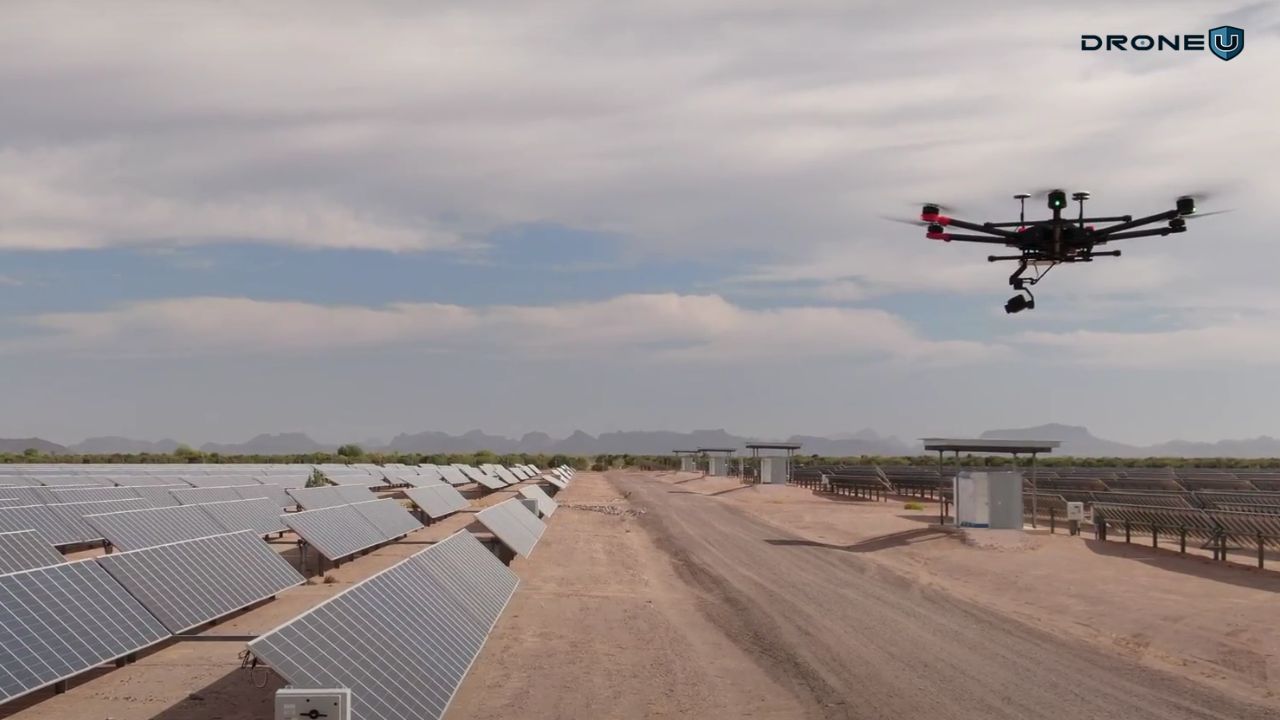
Drones are improving the way power companies inspect assets like power lines, solar panels, wind turbines, chimneys, and hydropower plants.
With a power line drone inspection, for example, companies can safely assess the condition of electrical infrastructure and avoid the risks that come with manual inspections.
9. Infrastructure & Utilities
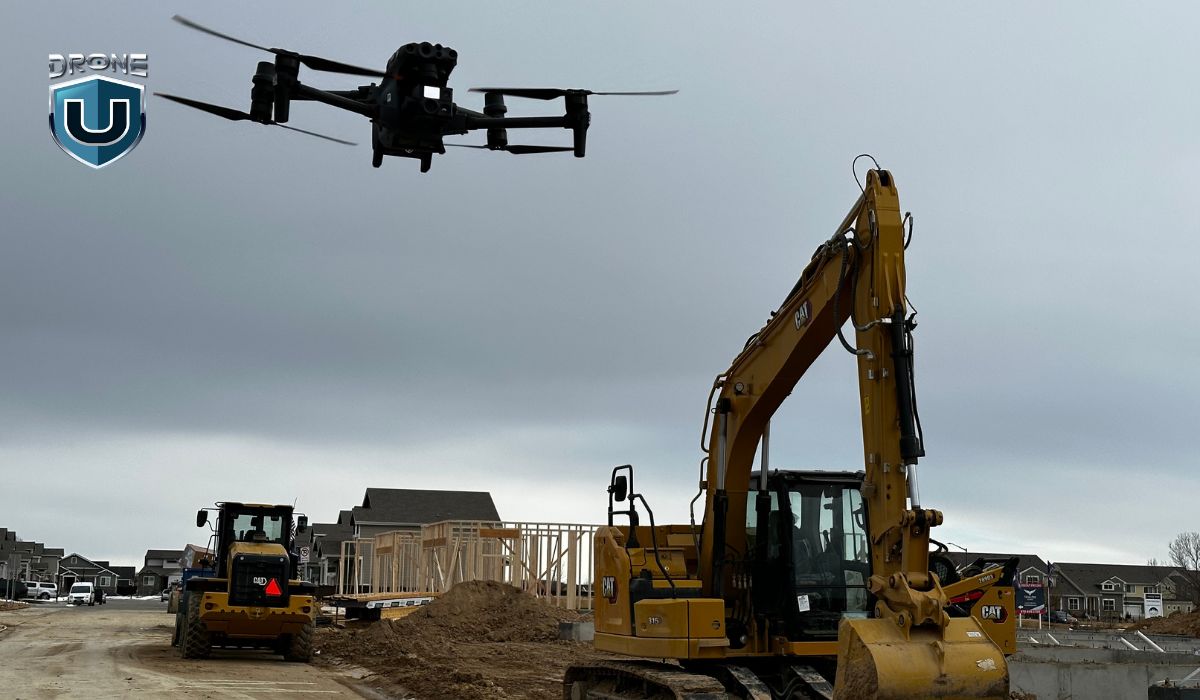
Through regular inspections of bridges, roads, railways, and other infrastructure, drones offer a quick and cost-effective way to maintain the integrity of public assets.
For instance, drone bridge inspections provide detailed visual data that can be used to detect structural issues early and allow for timely maintenance and/or repairs.
Since it doesn’t require heavy machinery, this type of inspection can minimize disruptions to traffic and reduce the time for the overall process.
Other Drone Inspection Applications
Drones are also used for inspections in these industries:
- maritime
- forestry
- real estate
- water and wastewater treatment
- telecommunications, etc.
Best Drones for Inspections
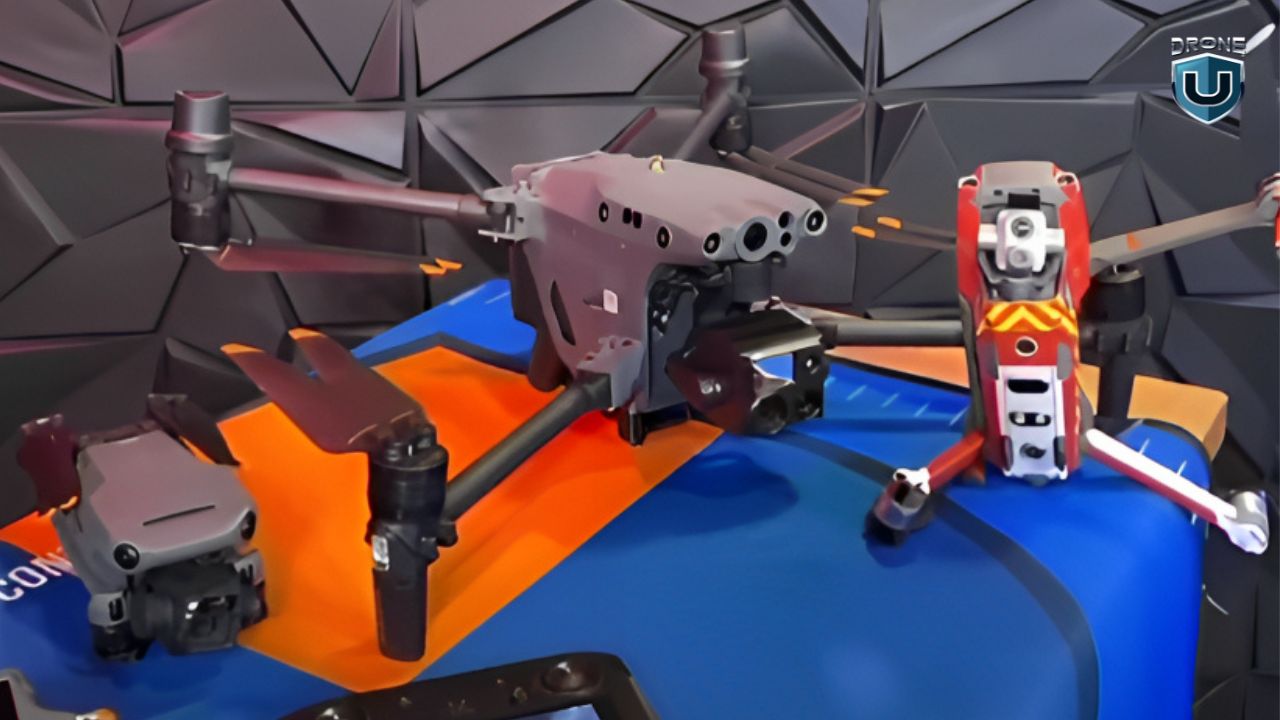
You may probably be wondering what the best drones for inspections are, right? Well, you’re about to find out!
In the table below, we’ve compiled a list of drones that we feel are the best for inspection.
| Industry | Drone model |
| Best drone for home inspections | Yuneec H520, DJI Matrice 300 RTK, Elios 3 |
| Best drones for roof inspections | Parrot ANAFI, Autel Evo 2 Pro RTK, DJI Mavic 2 Pro |
| Best drone for cell tower inspections | Phantom 4 Pro, DJI Matrice 30T, DJI Mavic 3 Enterprise, Skydio X10 |
| Best drone for bridge inspections | Elios 3, DJI Matrice 300 RTK, DJI Mavic Inspire 2, Parrot ANAFI |
| Best drone for powerline inspections | DJI Matrice 300 RTK, DJI Phantom 4 Pro, Prism Sky |
| Best wind turbine inspection drone | Mavic 2 Pro, DJI Mavic 3 Enterprise, Skydio X10 |
| Best drone for pipeline inspections | DJI Matrice 350 RTK, DJI Mavic 2 Enterprise, Parrot ANAFI |
| Best drone for construction inspections | DJI Mavic 3 Pro, DJI Mini 4 Pro, Autel EVO II Pro V3 |
Pros and Cons of Using Drones for Inspections
While there are a lot of benefits to using drones for inspections, it has some limitations too.
Here’s a breakdown of some of the pros and cons of drone inspections:
|
Pros |
Cons |
| 1. Cost-effective: Since they typically require fewer personnel and resources, drone inspections are often less expensive than traditional inspection methods.
Companies can achieve significant cost savings by limiting scaffolding construction to times when maintenance work is actually needed. |
1. Regulatory restrictions: There are strict regulations that govern where and how drones can be flown. For example, you can’t fly drones near airports, military bases, and other designated no-fly zones.
While these laws are crucial for safety and privacy, they place limits on where companies perform aerial inspections. |
| 2. Increased safety: Drones can access hard-to-reach, hazardous, or dangerous areas; this in turn lessens the risk of injury to personnel. | 2. High initial cost: The upfront investment in drones and related equipment and software is very high.
Since the operation of these drones requires technical expertise, companies also need to invest in training for their personnel. These costs can be prohibitive–especially for smaller businesses. |
| 3. Time-efficient: Drones can quickly (and efficiently) inspect large areas or structures which reduces the time needed for inspections. | 3. Limited range & battery life: Drones generally have limited flight range and battery life. This can be a challenge for companies that need more complex and large-scale inspections. |
| 4. High-quality data: Drones are equipped with high-resolution cameras and sensors that capture detailed and accurate data. This allows for a more comprehensive analysis.
Thanks to the real-time data they provide, drones also enable inspectors to identify issues immediately and take swift action. |
4. Weather dependence: Drones are very sensitive to extreme weather conditions–high winds, rain, or fog can severely impact their ability to fly safely and gather accurate data.
This dependence on good weather may cause unnecessary delays in inspections. |
| 5. Reduced environmental impact: Drone inspections produce less negative environmental impacts compared to traditional inspection methods that often involve the use of heavy machinery, manned aircraft, or vehicles. | 5. Accident-prone: Drones can easily crash due to factors like operator error or collisions with unexpected obstacles. And, given the high costs of these vehicles, a crash can result in significant financial losses. |
| 6. Better decision-making: Drone technology can capture precise and comprehensive records of an asset’s condition throughout its life.
By archiving the visual data obtained, companies can create a digital record of the asset’s complete history, which can be accessed and analyzed at any given time. Besides facilitating more informed decision-making, this also enables businesses to improve their asset management strategies for better overall outcomes. |
6. Detection limitations: Though drones are highly advanced, they may be unable to spot small or complex defects that a trained human inspector can easily spot. |
Legal and Regulatory Considerations for Drone Inspections
While drones can be incredibly useful in inspections and increase safety, companies should ensure that their users operate drones legally.
Untrained drone pilots can crash, cause damage to the environment, and even harm workers. According to a study by UF/IFAS, between 2015 and 2020, approximately 4,250 people were injured by drones. The study also showed that 21% of those injured were under the age of 18, and 84% of the patients were male.
What’s more, according to the European Union Aviation Safety Agency (EASA)’s 2024 Annual Safety Review, there was one fatality and one case of a serious injury caused by a drone in 2023.
Hence, it’s important to consider legal and regulatory compliance before flying inspection missions.
First, energy inspections are typically conducted under API (American Petroleum Institute) rules.
In contrast, the American Society of Mechanical Engineers (ASME) creates codes for the development, fabrication, and assessment of boilers and pressure vessels.
There are several institutions, including API and ASME, that design standards and educational resources to carry out examinations in various sectors. In most countries around the world, their standards are usually regulated by law.
Moreover, to operate a drone legally while performing inspections through drones, pilots must follow Occupational Safety and Health Administration (OSHA) drone regulations as well as laws put forth by the Federal Aviation Administration (FAA).
The Federal Aviation Administration (FAA) regulates all civil aircraft operations in the United States, whether they’re manned or unmanned. Staying updated on developments from this agency is crucial for any drone inspection company. For example, it may be helpful to know that, since 2023, the FAA has been exploring ways to expand BVLOS (beyond visual line-of-sight) operations–which could benefit industries that require drones to cover long distances.
As of May 2024, the agency had approved a BVLOS flight for a drone for the first time.
Click here for more information on FAA drone regulations. Also, keep in mind that regulations can vary depending on the industry, state, and type of drone mission being undertaken. Please check local regulations or consult an attorney before flying.
Future of Drone Inspections and Emerging Technologies
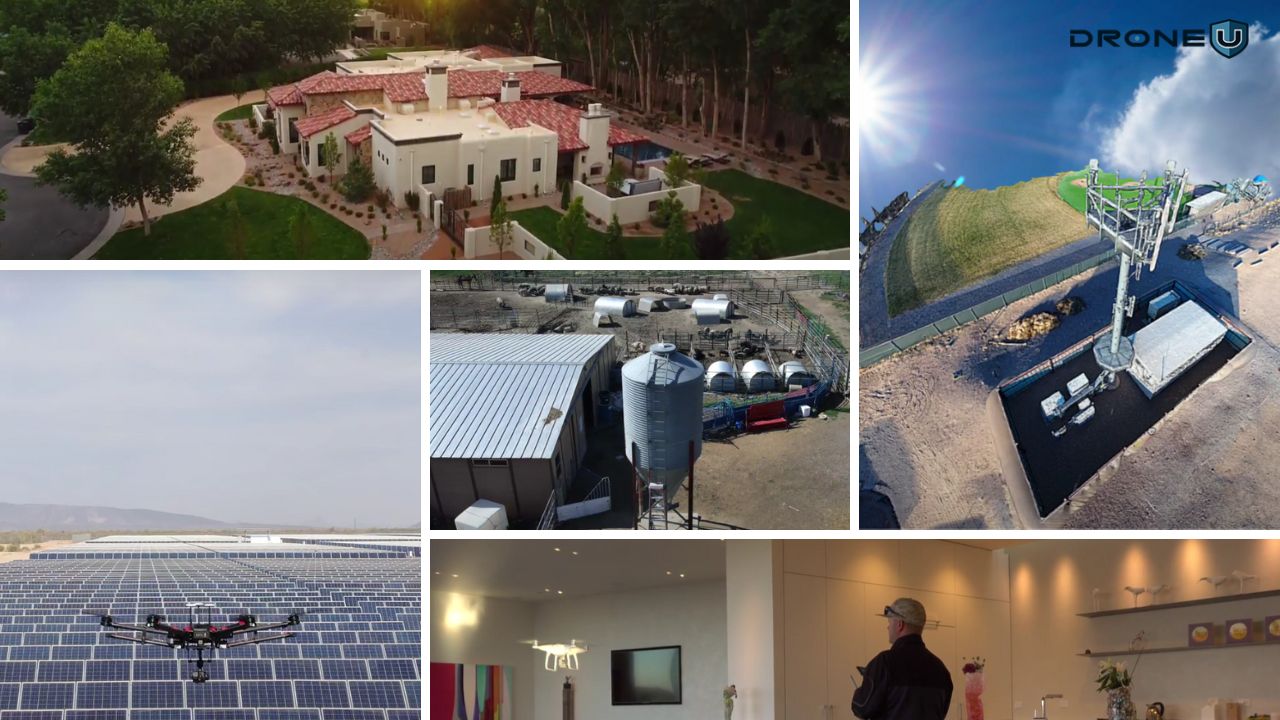
The use of drones for inspections has become a valuable tool across various industries such as infrastructure, agriculture, and energy.
With the continuous advancements in technology, the future of drone inspections looks promising.
Here’s what we think in terms of the future outlook of drone inspection:
1. Artificial Intelligence (AI) and Machine Learning (ML)
As drones become more refined, we can expect them to use AI and ML to automatically analyze images and data collected during inspections.
This will enable faster and more accurate identification of defects and other issues, subsequently reducing the need for human intervention.
2. LiDAR
Light Detection and Ranging (LiDAR) technology uses lasers to create 3D maps of structures and environments. LiDAR-equipped drones can be used for high-precision inspections of infrastructure, such as bridges and wind turbines, as well as for mapping and surveying.
3. Augmented Reality (AR)
AR technology allows for the overlaying of digital information in the real world. This can be used in drone inspections to provide real-time data and visualizations. It can also assist inspectors in identifying potential issues and making more informed decisions.
4. Swarm Technology
A swarm of drones can work together to cover larger areas or complete complex tasks. This technology can be particularly useful for large-scale inspections or in hard-to-reach areas.
Drone swarm technology enables the collaboration of multiple UAVs (unmanned aerial vehicles) to execute diverse tasks that are either too complex or too inefficient for a single drone to perform alone.
5. Energy Harvesting
The ability of drones to harvest energy from the environment, such as solar power or wind power, will enable longer flight times and reduce the need for manual charging or battery replacement.
6. 5G Technology
Drones also stand to benefit from the improvements in connectivity brought about by the rollout of 5G networks. The adoption of this technology is likely to allow drones to transmit data more quickly and reliably.
Overall, the future of drone inspections looks promising, with the emergence of new technologies that will enable faster, more accurate inspections with greater automation and reduced human intervention.
Drone Inspection Market: Bigger Than We Can Think
According to a report by the American Society of Civil Engineers (ASCE), a significant number of America’s bridges are aging, with 42% of all bridges at least 50 years old and 7.5% structurally deficient.
What’s more, the infrastructure in the United States is extensive and requires maintenance. Currently, it has:
- over 600,000 bridges
- 4 million miles of public roadways
- approximately 140,000 miles of rail
- 600,000 miles of backbone transmission lines
- 5.5 million miles of residential power lines
- over 190,000 miles of oil pipelines and 2.4 million miles of gas pipelines
From these numbers, it’s obvious that infrastructure maintenance and inspection can’t be done by traditional methods using fifty-year-old snooper trucks or workers climbing on ropes
Therefore, drones are a natural choice for inspecting and maintaining the country’s vast infrastructure network.
The good news is that the Biden administration’s infrastructure proposal promises to invest a historic amount of money in building and reinvigorating the country’s infrastructure and human capital.
Plus, with the introduction of the Drone Infrastructure Inspection Grant Act (DIIG), more drones will likely be deployed to inspect and maintain critical infrastructure across the United States.
As a result, America is not only fixing its outdated infrastructure but also advancing and modernizing it.
Final Thoughts
Drone inspection has emerged as a powerful and reliable solution for inspection and data analysis in different industries.
By mastering the art of drone inspections, you can help businesses improve their safety protocols, increase efficiency, and save time and money.
To get started in this burgeoning industry and learn from industry experts, be sure to check out Drone U’s membership.
Inside the Drone U membership, you will discover 40+ courses, from photography, videography, and mapping to surveying, 3D modeling, and inspections!
Frequently Asked Questions
1. What are the benefits of using drones for inspections?
Using drones for inspection helps businesses save money, keep their personnel safe, extract high-quality data, and make more informed decisions.
2. In which industries are drone inspections most commonly used?
Drone inspections are widely used in the construction, oil & gas, agriculture, power generation, and public safety sectors, among others.
3. What are the regulations for conducting drone inspections?
Regulations for conducting drone inspections may differ according to the country, state, or industry.
However, drone operators in the United States are typically mandated to:
- hold an FAA-issued Remote Pilot Certificate
- register their drones with the FAA
- adhere to airspace restriction
- comply with safety guidelines set by aviation authorities (such as the FAA)
4. How can I ensure the accuracy and safety of drone inspections?
If you want to ensure that your drone inspections are safe, here are some general guidelines you can follow:
- Ensure that your drone is within visual line-of-sight.
- Properly understand the drone’s capabilities and limitations.
- Take note of weather conditions before flying.
- Ensure that the drone weighs less than 55 pounds (including payload) at takeoff.
- Avoid flying in restricted zones like airports.
- Comply with local regulations.
- Conduct pre-flight checks.







Add Your Comment